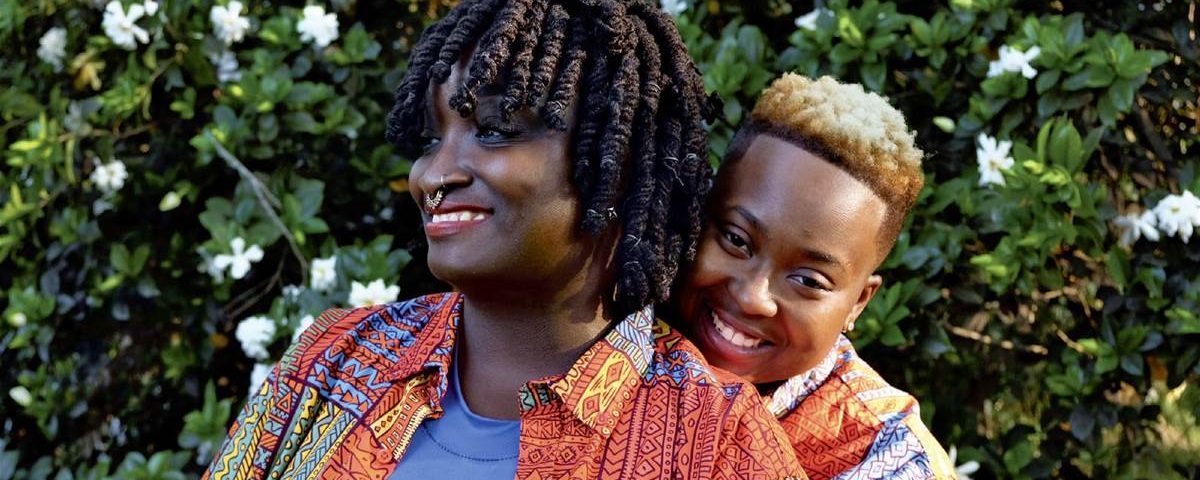An article the journalist Jamal Jordan wrote in 2018 unexpectedly changed his life. Only a few months into his job at The New York Times — and shortly after the end of an intimate relationship — he started to reflect on love, being an LGBTQ person of color, and the relationship between those two things. He channeled this reflection — and his frustration over the lack of media representation of Black and brown same-sex couples — into an article for the Times’ Pride section titled “Queer Love in Color.” After the article’s publication, Jordan said, he received dozens of messages from LGBTQ couples of color around the world who wanted to share photos of their families. This overwhelming response led him on a deeper journey documenting these underrepresented love stories, he said. “People really wanted to let me and the world know that a love like theirs exists,” said Jordan, who worked at NBC News prior to the Times. “I started to wonder what would happen if every little queer kid knew early on Black queer people can find love and could say to themselves, ‘That could be me.’” For his book, also titled “Queer Love in Color,” Jordan traveled across the United States — from LGBTQ-friendly places such as Miami and San Francisco to small Southern towns like Chickasaw, Alabama. He also ventured to Canada and South Africa, where he interviewed multiple couples, including one of the two transgender people featured in his book, which debuted Tuesday. In Khayelitsha, the largest township in Cape Town, Jordan met Tee and his girlfriend, Sinoxolo. In the book, Tee recalls first hearing the word “transgender” on an episode of “The Oprah Winfrey Show” as a child and realizing this word describes him. After he came out, Tee’s family kicked him out, leaving him homeless for years. He said he was eventually able to receive health care at South Africa’s only publicly funded gender-affirming clinic, which sparked his interest in activism. Through his activism, he met Sinoxolo in 2018. “I never thought a person like her, so beautiful and so intelligent, could ever look my way,” Tee shared in the book. After finally working up the courage to talk to Sinoxolo, he said, she revealed she “felt like [they] should’ve done this a long time ago.” While fear, insecurity and self-doubt aren’t unique to LGBTQ people, Jordan said, it’s a constant theme that runs throughout the book. “Amisha and Neena are a lesbian couple I met in Chicago with a story I cannot read without crying,” he said. “They were both openly gay and best friends for 14 years before connecting on a romantic level. Amisha told me that as people of color, we’re often very regimented in our daily lives because of the amount of discrimination we encounter, but every day we’re presented with a moment that could change everything, so you assess the risk.” Amisha refers to these moments as “magic moments,” referencing the term coined by the author Paulo Coelho in his book “By the River Piedra I Sat Down and Wept.” Amisha eventually seized the moment and worked up the courage to call Neena and disclosed her true feelings. While Jordan hopes people will connect with every couple or family featured in the book on some level, he expects readers who didn’t grow up with positive examples of queer joy and love to connect with the older couples in the book. “Mike and Phil are two Black men, both in their 70s, who met in Detroit, at church, on Easter Sunday in 1967,” he explained. “When photographing them, they asked me to be sure to mention that they’ve spent every night together for over 40 years.” Jordan hopes seeing photos of couples like Mike and Phil who are in love and reading their stories, will provide young readers with a visual to imagine what their own future love could resemble. “Straight kids have references to help them visualize a romantic future that they get from media or even their grandparents,” he said. “Where do young queer people, especially those of color, turn to when media seems to focus on our trauma?” Carlos Guillermo Smith, who in 2016 became the first openly LGBTQ Latino person elected to the Florida Legislature, shared in the book that he hopes he and his partner can be a source of inspiration. “I’ve spoken to so many parents with young gay kids, who tell us that we give them hope that their kids are going to be OK,” he said of his relationship with his partner, Jerick. “Living our lives out loud, particularly not only as an LGBTQ couple but as two Hispanic males in a public, same-sex relationship that’s celebrated, I hope — I know — that had an impact on young people.” In addition to making sure young LGBTQ readers who often feel invisible feel seen, Jordan hopes “Queer Love in Color” reminds the larger LGBTQ community to be softer with one another. “We know we’ve come so far as an LGBTQ community regarding our safety, rights and resources,” he said. “But many of the older people I met shared with me that my generation actually missed out on the connected experience of their generation and how they created and found community out of necessity. While we enjoy the benefits of the work our elders did before us, I hope the LGBTQ community will remember we’re still all in this together and to be kinder with one another.”

